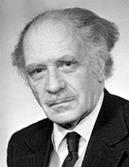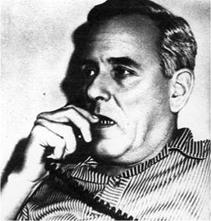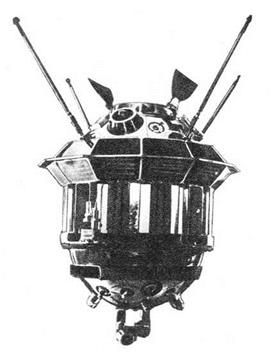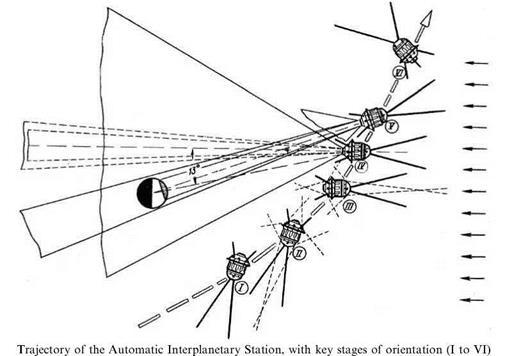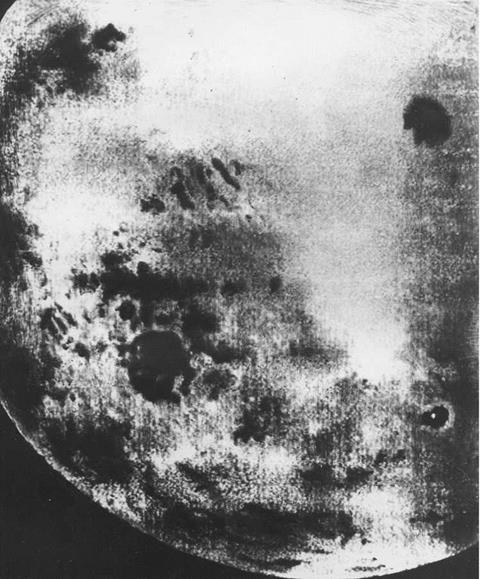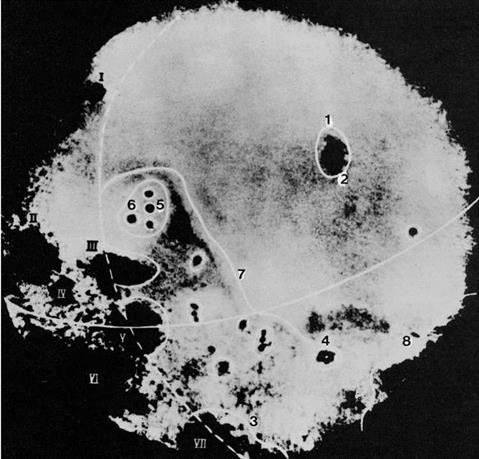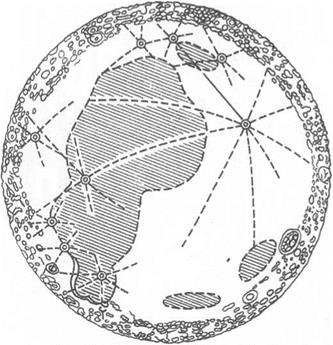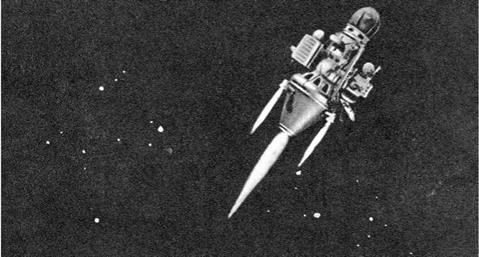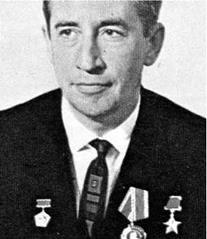LOOKING BACK AT THE OLD MOON
How do Soviet space leaders regard their exploration of the moon now? In the early 1990s, the leaders of the space programme at the time emerged from the shadows to tell their story of the moon programme. Inevitably, granted the secrecy of the period, their first concern was to tell what happened. Many were directly involved as partisan protagonists, so their comments must be treated cautiously.
One of the first to tell the story was Chief Designer Vasili Mishin, first in magazine articles and then in interviews (his diaries were bought by the Ross Perot Foundation and have yet to be published). He was followed by numerous journalists, writing in dailies such as Izvestia and magazines like Znaniya. Some of the most detailed information was provided by the head of the cosmonaut squad, General Nikolai Kamanin, who kept a diary throughout the period and which has now been translated [6]. Latest and possibly last of the old guard to speak out was Boris Chertok, who in his eighties compiled a multi-volume memoir, published as Raketi i Lyudi (Rockets and people). Regrettably, little has been put in print by the cosmonauts involved in the lunar programme and some of them have already died. Oleg Makarov, for example, although he would have been on the first around-the-moon and first landing mission, was prepared to talk about the planned Zond mission, but would say very little about his own prominent role [7].
All expressed varying levels of regret, even grief, that the Soviet Union failed to win the moon race. Having achieved all the early breakthroughs in space exploration, they took the view that the Soviet Union should, with proper organization, have been able to reach the moon first. ‘How could we, after such a bright start, have slipped into second place?’ asked military journalist and cosmonaut candidate Col. Mikhail Rebrov [8]. Kamanin told his diary just how difficult it was for him to come to terms with what he regarded, unambiguously and without any mitigating factors, as a crushing defeat: ‘We drain the bitter cup of failure to the dregs,’ he acidly told his diary. He can’t have been the only one.
Most agreed with the reasons advanced by Mishin to explain why the Soviet Union lost: resources much inferior to the United States, the rivalry of the design bureaux, the continual revision and remaking of decisions, the false economy of avoiding comprehensive ground-testing, the death of Korolev at a crucial stage [9]. Most were sympathetic to Mishin, regarding his dismissal and the suspension of the N-1 programme as bad and even unjust decisions. In histories in which blame is liberally apportioned and widely scattered, several focused on Glushko for not being big enough to cooperate with the N-1 project from the start, arguing that he played an inconsistent, spoiling and even vindictive role in the programme [10]. Most felt that the N-1 would probably flown and been a successful rocket, eventually assembling large orbital stations. Chertok believed the Soviet Union did have the capacity to build a proper lunar base in the late 1970s and that such a venture made political, engineering and scientific sense, although it would have been costly [11]. Mishin [12]: We were able and should have implemented such an expedition after the USA. ‘Only a sense of political embarrassment, out of coming second, after the great rival, prevented this from happening,’ he said. Most of all he regrets the cancellation of the N-1, the wasted effort, the bitter resentment this caused in the industry and its replacement by an even more expensive programme which was ultimately cancelled in turn. Mishin’s final comment: ‘We were just a step away from success with the N-1. We could have built a base on the moon by now without stress or hurry.’
Having said this, these accounts are somewhat one-sided. Vladimir Chelomei did not leave memoirs, nor did Valentin Glushko. Although Glushko published technical papers, he never left behind a political statement defending his role in the space programme. When he died in 1989, his vast Energiya bureau was re-divided much as it was before he clustered its constituent companies together in 1974. The original OKB-1, now RKK Energiya, published a vast, colourful company history of the bureau and its projects, providing much of the detail on which an important portion of our knowledge of the Soviet moon programme is based. More critical comments and views come from General Kamanin. A diehard Stalinist, his severest criticisms focused on what he regarded as the poor quality of leadership given by the party and government, his own military and the space programme leadership, like Mishin and Keldysh. He was critical of the N-1 from the start, which he always regarded as an unsuitable and bad rocket: Chelomei’s UR-700 would have been better. Patriot though he was, he was overwhelmed in unconditional admiration of America’s stunning lunar successes. He resented the way in which they were under-reported and downplayed by the Soviet media and that he could not speak publicly and approvingly of them. He felt just how tough it must be on disappointed Soviet cosmonauts not to fly to the moon. Kamanin was especially critical on how good decision-making was undermined by the corrosive secrecy with which the Soviet lunar programme was run.
Retelling the Soviet side of the moon race, with its setbacks, ‘grandiose failures’ (Kamanin’s words), waste and poor decisions, seems to have given these writers little satisfaction, apart from the unmeasurably important one of making the facts of this hidden history known. They seemed to derive little comfort from the fact that from the chaotic final stages of the moon programme, a plan emerged for the building of space stations. This was a field in which their country became the undisputed world leader and remains so to this day. In his own way, Glushko was vindicated, for in 1987 his replacement for the N-1 did fly, Energiya giving the Soviet Union the most powerful rocket system in the world. Its subsequent cancellation, for economic reasons, can hardly be laid at his door. Unlike the N-1 and more like the Saturn V, the Energiya flew perfectly on its first two testflights and it was not for technical reasons that it never flew again.
Some of the writers refer to the general loss of interest in going to the moon among the Soviet political leadership, now that the Americans had achieved the feat and demonstrated it several times. Afanasayev [13] said that this was the considered view of the Soviet political leadership by 1972 and suggests that the decision to wind down the unmanned lunar programme was taken at around the same time as the decision regarding the manned programme. It is interesting that the political leadership of both the United States and the Soviet Union lost interest in flying to the moon in parallel at around the same time, even though one country had been there and the other had not. The next grand projet of Brezhnev’s Soviet Union was a more practical, earthly one, the Baikal Amur Railway.
The hardware and rockets from the Soviet lunar programme mostly found their way to museums, like the LK lander. The main collection of unmanned Soviet lunar spacecraft may still be found in the Lavochkin Museum, and that is where Lunokhod 3 may be found. When the financial situation of the Russian space programme reached rock bottom, many of its most famous artefacts were sold, from spacesuits to space cabins, Vasili Mishin’s diary, even Sergei Korolev’s slide rule. Even real spacecraft were sold. On 11th December 1993, Sotheby’s sold Lunokhod for $68,500, but it was explained to the buyer that he would have to collect it from the Sea of Rains!
It is with the moon drivers that we leave the story. Lunokhod was one of the great achievements of the lunar exploration programme, though, as we saw, far from the only one. The moon drivers did everything expected of them and more. Not only had they worked away from home for the year-long journey of Lunokhod and the halfyear journey of Lunokhod 2, but they were not even allowed to tell their families or friends where they were or what they were doing. Not until perestroika were they allowed to come out of the shadows and tell their remarkable story. Since then, the Lunokhod drivers would gather once a year, on the great 17th November, to recall their experiences in driving on another world. They are older and greyer now and most have now retired. Vyacheslav Dovgan is now a general. Happily, they were at last formally conferred with the medals that they had deserved a quarter century earlier and now wear them with pride [14].














